Ice Issues
Fish caught in a remote place like Ardnamurchan need some way of being preserved to reach distant markets in a saleable condition
In the earliest days of the fishing the salmon caught around Ardnamurchan were taken to Ardtoe pier where they were boiled before being sent south to market. This is referred to in this article
The salmon netting industry in Ardnamurchan seems to have switched to packing its fresh product in ice in the 1860s when it is thought the Fascadale, and perhaps Ardtoe ice houses were built, as described in the article noted above. Certainly the Fascadale ice house is shown on the 1872 OS map. Presumably the catch was worth more fresh than boiled !
It was said that Fascadale had collected ice from three sources: hill lochs frozen through the winter, the “ice pans” at Fascadale, and most interestingly it was said that vessels loaded with ice would an anchor in the bay and unload into the ice house.
There are lochans, small lakes, high in the hills just to the south of Fascadale. These would have frozen easily through the winter providing a source of ice. Visible to the right in the photograph at the top of this page is the stone built stable. In days gone by, or so it was said, a pony was kept there to transport this ice. It would be taken down to the ice house in baskets slung on either side of the pony for summer use. In 1975 the stable was roofed, in fairly good structural condition but unused. Sadly the roof is now off this building.
The supply of ice from the hill lochans cannot have been sufficient for Fascadale’s needs. To supplement this ice pans were built to the east of the net green: these are still visible today. A water supply was provided by digging a ditch from the burn (stream), Allt nan Lann that flows about 500 yards to the east. The ditch is shown on the 1872 Ordnance Survey map, is visible on Google Earth and can be seen on the ground. There must have been some sort of “switch” on this system to regulate the flow but there is nothing visible.
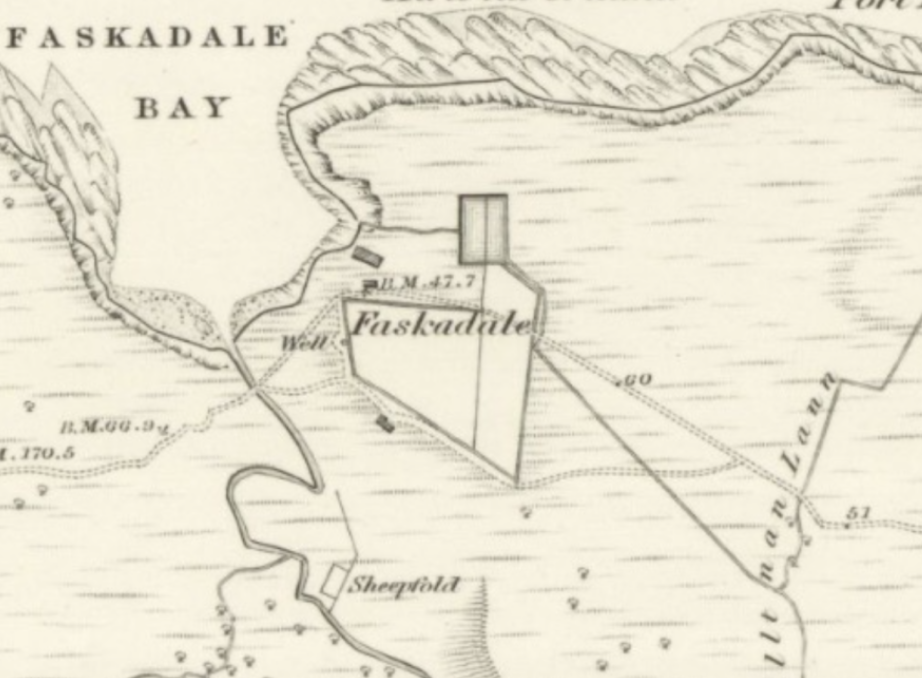
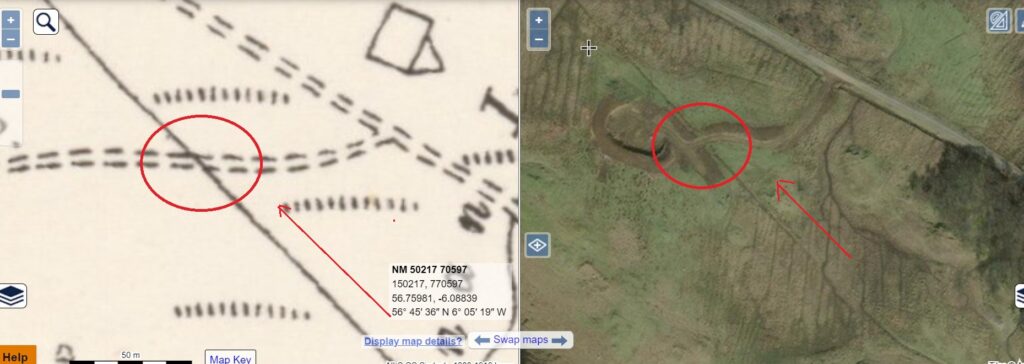
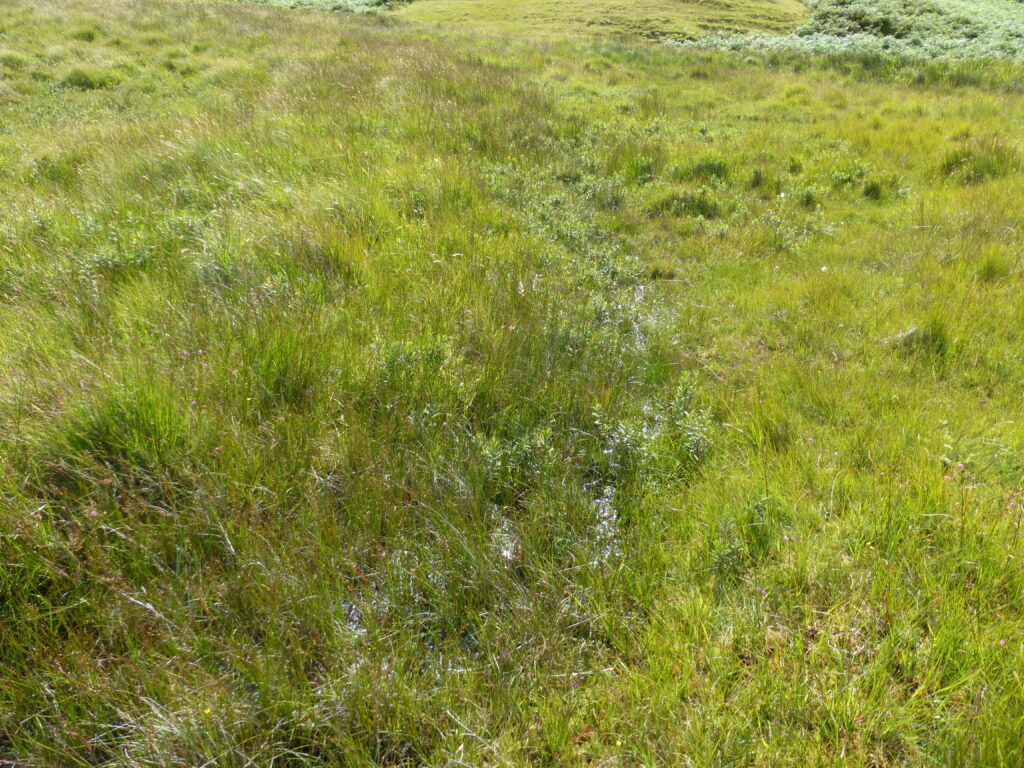
Photo courtesy of Peter Aikman
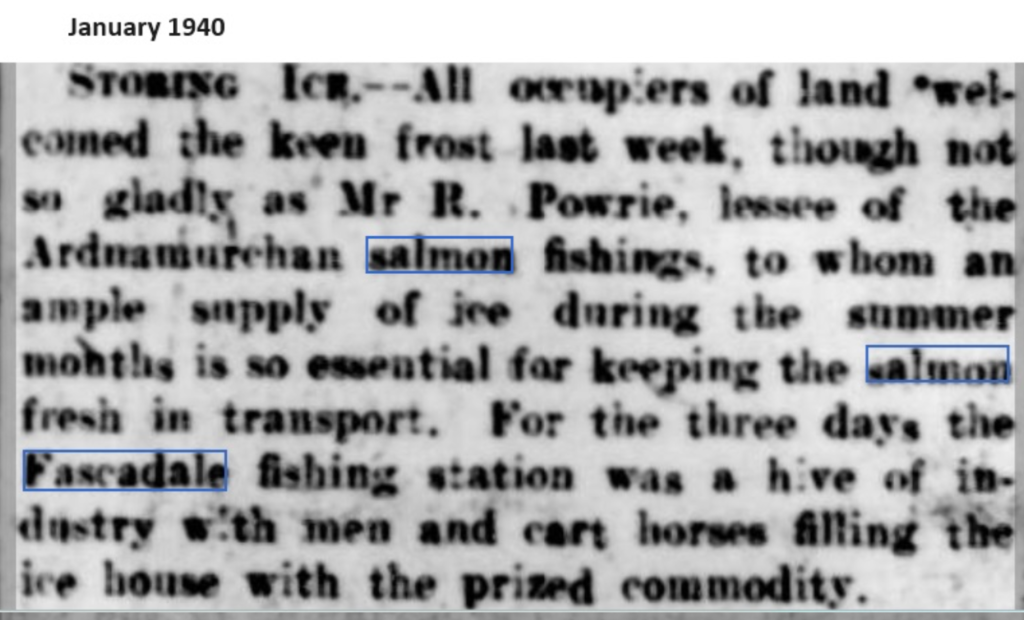
However the newspaper article below evidences that the hill lochs and ice pans did some years not provide enough ice for the demands of the fishing season. It talks of ice being “got from the ice plants at Oban and Mallaig”. It is most likely that this ice was transported to Fascadale by boat. The post visible in the foreground of the photo below was said, in the 1970s, to have been used in the process of landing ice from vessels in the bay.
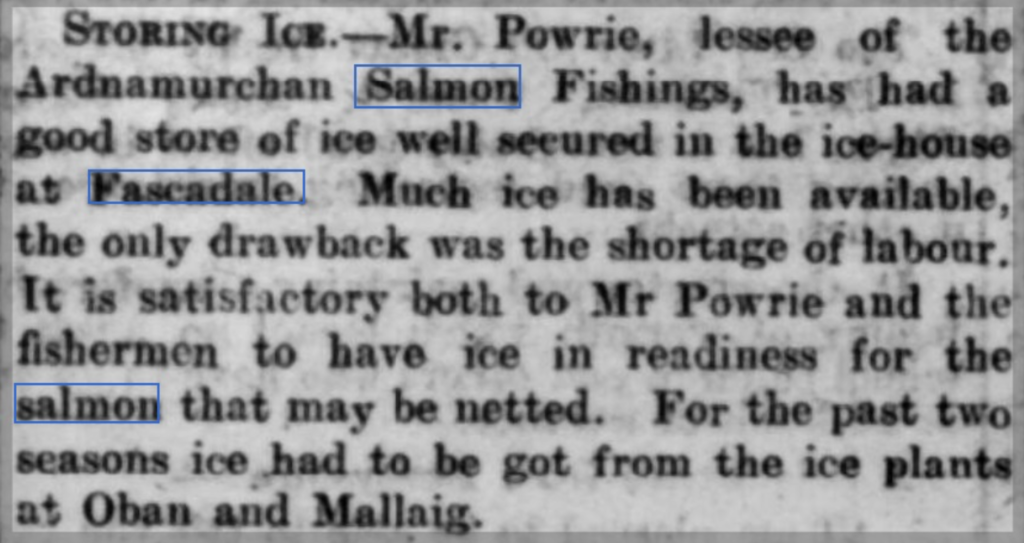
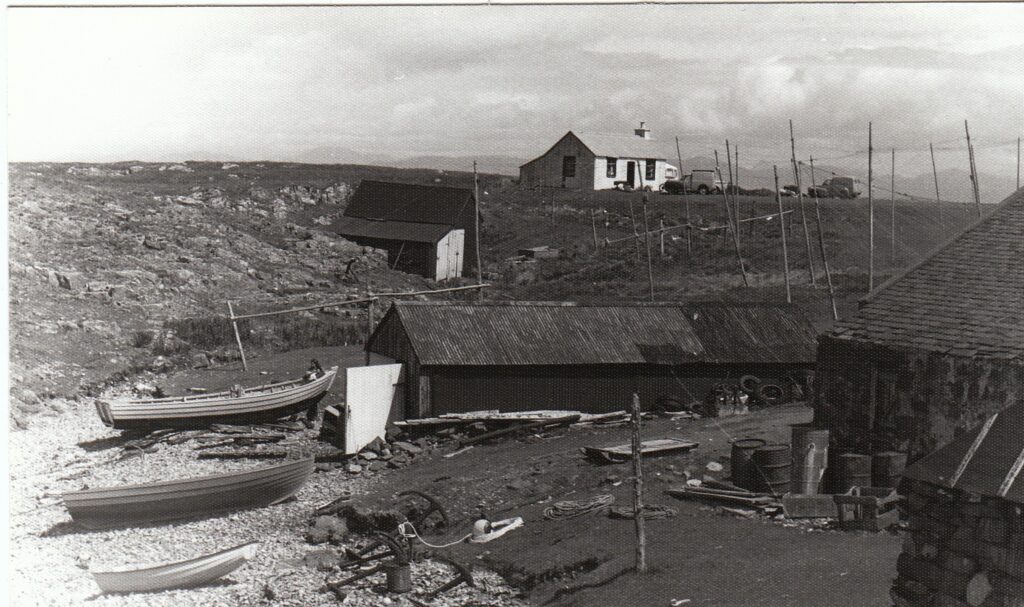
In his book “Ice Blocks from Norway:The Importation of Natural Ice to Britain, Circa 1870-1925” the author describes the development of ice factories in the 1920s in the UK. It is interesting to speculate as to where Fascadale sourced ice in the warmer winters prior to the building of ice plants. The 1846 newspaper article below talks of ships being dispatched to the Baltic.
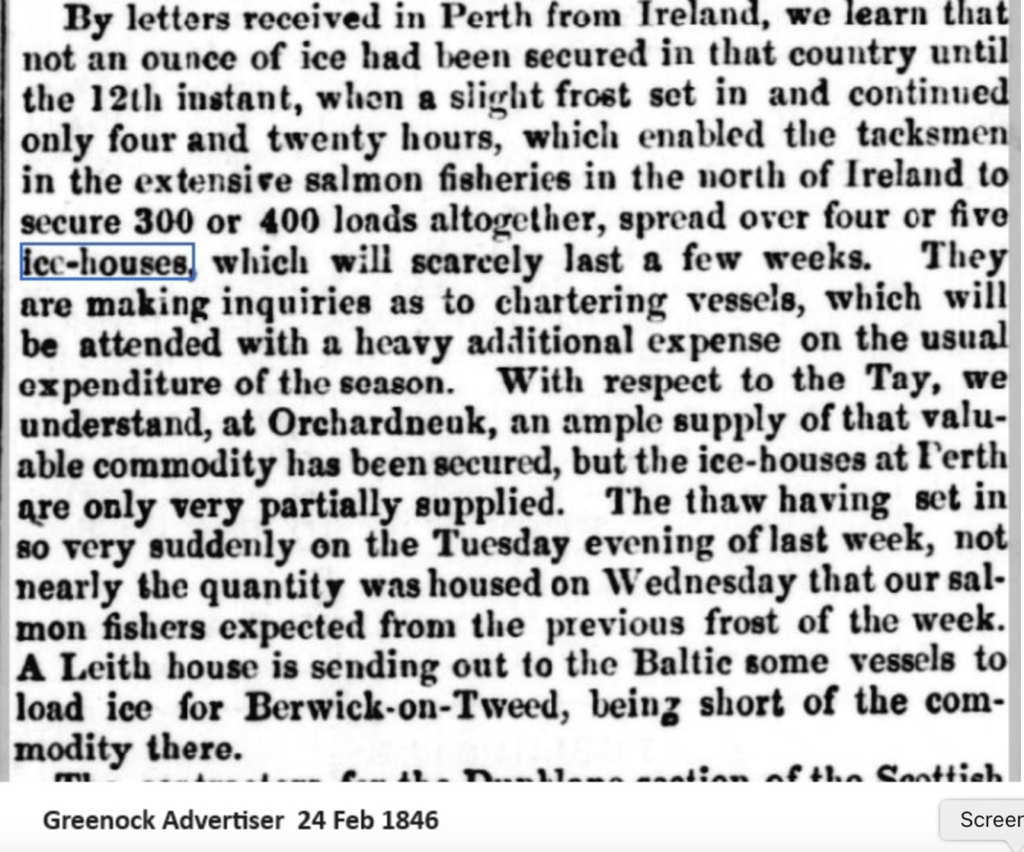
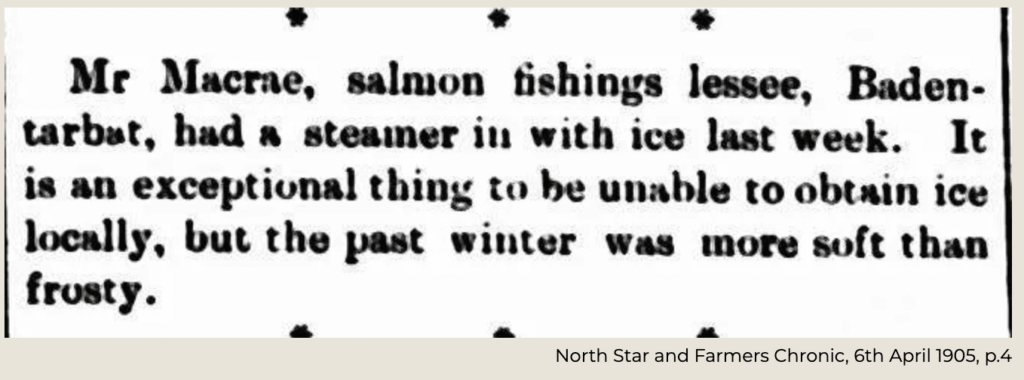
By 1975 Fascadale was able to manufacture its own ice. Even at this date there was no mains electricity at the fishery so the ice plant appeared a very old fashioned piece of equipment.
There was an uncooperative noisy single cylinder hand cranked petrol engine which drove a compressor. This pumped compressed refrigeration gas around a heat exchanger in a big brine tank. The refrigeration gases lowered the temperature of the brine to below freezing point. Ice was then formed in open topped metal vessels that sat in the tank. These metal vessels, filled with ice were so heavy that a block and tackle was needed to get them out of the tank. Once out of the brine tank the ice filled metal containers were hosed with water to loosen the ice inside. Once out of the containers the big blocks of ice were then lifted into a hand cranked “mangle worzle” to be broken up. Like everything else at Fascadale even getting the ice was heavy work.
In 1977 mains electricity finally reached Fascadale and an electric ice making machine was purchased. Progress.
Many thanks to Peter Aikman for finding and providing these wonderful old newspaper cuttings
